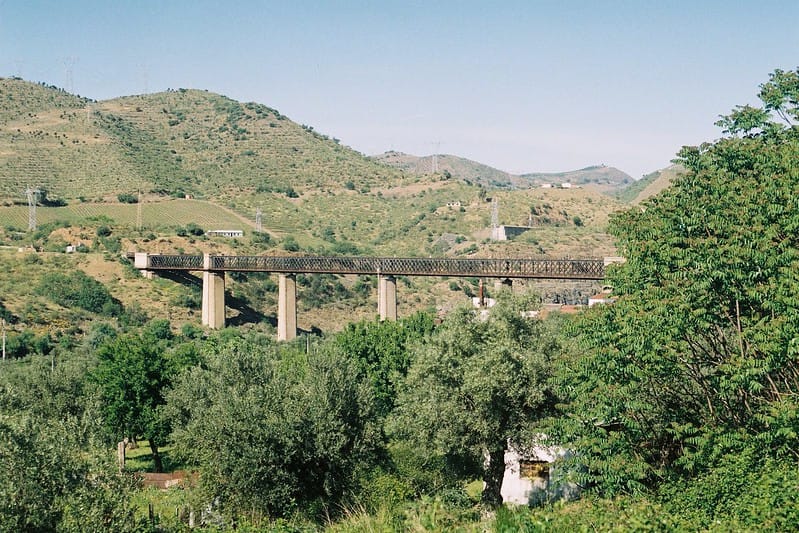
Take a scenic train ride on the Douro Line. The trip from Porto to Pinhao is arguably one of the most beautiful train rides in Europe.
Get off at Sao Jo
1. Visit the Castle of Freixo de Espada a Cinta
Located in the village of Freixo de Espada a Cinta, this castle is one of the oldest Transmontana fortresses. It was documented in the 12th century as part of a circuit created by King Afonso III and his elder son, Dinis.
There is little left of the castle except a seven-sided tower known as Rooster Tower (Torre do Galo). The ruins are open daily for visitors.
The best time to visit the castle is during spring and summer, from March to September. The weather is warm and sunny, and the vineyards are at their fullest bloom.
It is possible to reach the castle by train. The Linha do Douro is an important railway route with 11 daily departures to Peso da Regua and five services continuing up to Pocinho. To get the most out of the trip, make sure to sit on the right side of the carriage for the best views. The journey takes approximately three and a half hours, including stops at Foz do Coa.
2. Explore the Vale do Coa Archaeological Park
The Vale do Coa Archaeological Park is a UNESCO World Heritage site that features ten sites with open-air engravings. Carved into the rugged rocks of this region, the engravings depict animals, hunting scenes, and other aspects of daily life. Seeing these Paleolithic drawings is a must-do activity for travelers visiting the Douro region.
To get to the Park, book a guided tour through one of the many companies that offer trips. These tours usually include a visit to the museum and the park’s main sites.
For a more laid-back option, take the Linha do Douro train, which runs through the valley and is considered by many to be one of the most beautiful rail trips in Europe. The train takes around two hours to reach Peso da Regua, where it turns inland for the rest of the journey until reaching Pocinho. The train leaves several times a day from Porto. Check the schedules in advance to make sure you can catch a ride that stops at Foz Coa.
3. Take a Boat Trip on the Douro River
See the Douro from a different perspective on a cruise up river. From the arid landscapes around Sao Jo
If you want to explore more of the Douro, there are also multiple options for hiking and cycling tours in the area. Spring and early summer offer beautiful flower displays while mid to late September is when the vines turn a glorious array of gold, copper and bronze.
If you don’t have a car, the easiest way to get to Pocinho is by train. The direct service from Porto to Tua takes just over three hours and passes alongside the Douro Valley on what was once one of Europe’s most scenic railway lines.
4. Visit the Wine Museum
The UNESCO World Heritage-listed Douro region has a climate and soil that is ideal for growing grapes, and it has had a long wine-producing tradition dating back centuries. For a day trip into the region from Porto, there are many ways to explore it and its villages and quintas (or wineries). One of the most scenic and economical is the Linha do Douro train line.
This line snakes along the river, with craggy, steeply terraced vineyards and tiny villages clinging to hillsides rising on both sides of the track. It’s an otherworldly and incredibly beautiful landscape.
The train makes 11 daily stops from Porto to Peso da Regua, and five continue up the river to Pocinho near the Spanish border. From here, it’s a short walk to Castas & Pratos, an upmarket restaurant that offers food and wine tastings. The Wine Museum is also close by and provides a helpful grounding on the history of Port.
